Posts Tagged landscaping
Landscape Maintenance – Just Right this Thanksgiving
Thanksgiving is just around the corner and its time to get your home spruced up to meet all the guest that will be visiting during this wonderful time of year. In all the excitement and all the things to do, you should never forget your landscape maintenance. Why you might ask? Well its your landscape that meets the eye of your guest first and you want them to enjoy every inch of your surroundings, so you better get started right now!
Whether its the pesky mother-in-law or the who’s of who that you’re trying to impress, don’t hesitate to get your lawn in shape by hiring the experts in lawn care and maintenance. Now here’s the deal. If you’re sure you want to get all things in shape for your thanksgiving home gathering then you’ll need to understand a few things first.
What Real and Professional Landscape Maintenance Involves

Not everybody knows how to treat a lawn and get it looking its best and here’s where we come in. You see a lustrous landscape will require some degree of attention and education. Now as seasons change so do maintenance techniques and in the fall best practices include:
- Watering and Mowing
- Soil Aeration
- Fertilizing during Fall
- Filling in Bald Spots
- Weed Control
Its very important that you continue to water and mow your lawn, as needed, throughout the fall. Secondly expert lawn care providers will know that soil aeration is critical especially during fall. When this is done oxygen, water and fertilizer can easily reach the root of your grass.
The third important aspect of maintenance is the application of fertilizer during the fall. This action delivers essential nutrients which gives your grass the ability to grow deep roots now and also keep nutrients in the tank until next spring season. The filling of the bald patches is next on the list at number four and we use a special lawn repair mixture that will give the garden a full body and a great look that will make your neighbors die for.
Last but not least is weed control and most herbicide manufacturers recommend applying the weed killer during early-to-mid autumn. Apply this now and your garden will be weed free even next spring.
There’s no doubt that we can give you all the assistance and lawn care advice needed. Contact us if you want to enjoy the benefits of our expert advice and reap the rewards of real landscape maintenance.
Fall into These Horticulture Habits for Winter
Shuttering your garden for the fall is easier than you might think. You probably already know to clean up any debris and uproot weeds that love nothing more than to spread, but there are a few more horticulture steps that can really put you on the right path for a renewal in spring and bounteous summer harvest.
Get Your Garden Cleaned Up
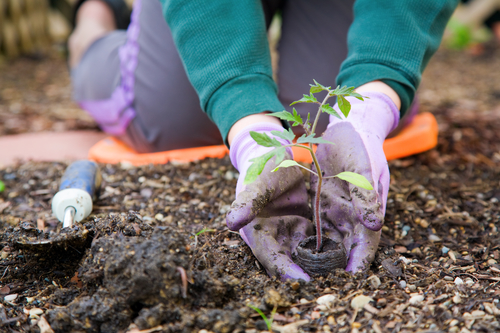
It might be tempting to dust off your knees, climb out of your garden, and let nature take its chilly winter course. The thing to realize is that while that might be easier now, you could be setting yourself up for more work later. Prepping your soil – and perhaps planting a cover crop – and replenishing your mulch can make life so much easier in early spring next year.
You want to remove any weeds you find or decayed plants before your ground gets too cold. A professional landscaping company can help you remove weeds, prune perennials, and even turn your fall leaves into mulch and compost that nourishes your soil year round.
If you’re really strapped for time, though, and you don’t want weeds to grow then put plastic or cardboard over existing weeds and leave that cover on through the winter to keep weeds from spreading. Or call on DK Landscaping and get landscaping experts to clean up your garden in time for winter.
Making a light pass of your garden with a tiller can also clear your garden of insects that plan on overwintering (spending the winter) in your soil. Insects like grubs and beetles want to hunker down and spend the winter in your soil, but these same insects can ruin your plants and screw up your soil!
A Horticulture Essential: Prepping Your Soil for Winter
The plants in your garden are actually more complex than they might look at first glance. When your garden’s soil doesn’t have the nutrients that your plants need to grow to their full potential, they emit stress hormones that can make it easier for nearby insects or diseases to take hold of your garden. That’s obviously not what you want.
Late fall might actually be the best time of the year to call on a company like DK Landscaping to test your soil to make sure that it contains the right kind of nutrients to promote plant growth. DK’s horticulture experts will look to see how much organic matter is in your soil, gauge the level of mineral nutrients in your soil that your plant roots can absorb, and measure levels of potassium and phosphorous.
(Nitrogen, phosphorous, and potassium are your soil’s three main macronutrients. Potassium helps for water retention in your garden and nitrogen and phosphorous ensure that you get early growth and healthy roots.)
That might sound really complicated, but a simple test can tell you a whole lot. Something as simple as adding lime to your soil can help bring your soil’s pH into balance too. Adding lime is also really good to do in late fall because it takes a while for the soil to absorb it. Time is your friend in the winter months when your garden is basically laying fallow.
Leaves are Solid Gold for Your Garden
Once you’ve tested your soil, you’re going to want to apply some kind of mulch (goes on top of soil) or compost (goes into soil). Chopped-up leaves sprinkled over your garden will enrich your soil, improve water retention, and stop weeds dead in their tracks.
DK Landscaping can handle more complex horticulture and help you with regular garden maintenance, irrigation, and general landscaping in fall and throughout the year.
Landscaping Services – We do it Right!
Serious and well informed homeowners are the ones who invest time and money in landscaping services in order to ensure that their landscape is always beautifully designed and well maintained. This is because they understand the need to add value to their property in the event they might need to put it up on the market for a quick sale.
Most professionals are on the hunt for the best and most attractive job offers and find themselves moving and relocating to different states in order to get the job that pays top dollar. Others might move in order to benefit from lower costs of living that can be afforded in other states leaving them no choice to sell their current home and move to greener pastures.
Now when this happens you want to be in a position to sell your home at the best price and one sure way to do it is by the proper maintenance of its landscape. This not only adds value to the property but it provides a serene atmosphere for you and your family.
DK Landscaping Services
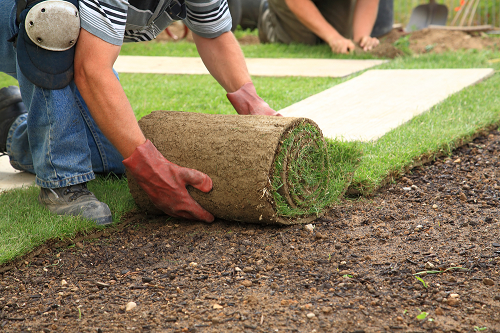
We at DK Landscaping offer the best home and commercial gardening services in Rohnert Park and Santa Rosa areas. We offer sound advice on how you can increase market value by installing the very best landscaping tools and techniques.
Many of our clients have been provided the opportunity to not only upsell their properties to the next buyer but also feel good knowing that they are offering a property that has been efficiently managed and maintained.
Our specialized team can manage all landscaping development projects including high end to low maintenance landscaping projects as well as irrigation installation projects. We remove shrubbery, cut trees and properly dispose of all waste in a manner that’s eco friendly and hassle free.
If you need to make a first time impression or simply just want to tidy your surroundings don’t hesitate to give us a call or contact us online for more information. You’ll be surprised to know that we’re more than what meets the eye.
Tips and Ideas for a Xeriscape Santa Rosa Project
The movement to xeriscaping has taken hold of arid regions in the United States. With the seldom rains and insufficient water in these areas, maintaining an attractive and healthy lawn is not easy. Xeriscaping provides for a viable alternative for conventional landscaping where non-native plants are introduced to your backyard. These are often slow-growing and drought-tolerant providing you with a hearty and simple environment even in the most stringent climates.
Why Convert to Xeriscape?
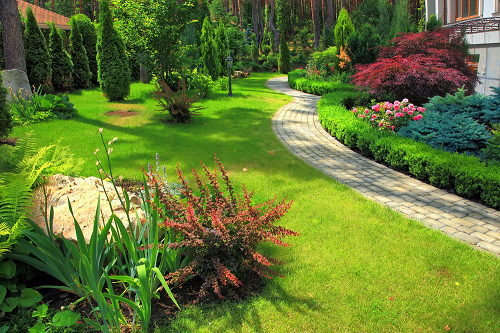
Converting to xeriscaping is understandably a big decision for any homeowner. But given the benefits, you should probably consider making this very desired landscape change. Benefits of xeriscaping include:
- Preserving water quality
Xeriscaping requires fewer inputs which in turn reduces the number of chemicals that reach underground water reservoirs. Additionally, the plants that replace the traditional lawn grasses mirror the agroecosystem which act as sufficient filters for groundwater.
- Saves water
Landscaping water requirements have been a thorny issue. For traditional landscaping plants to survive, they require what could be considered excessive irrigation. Note that when done right and properly maintained, xeriscaping has been proven to use just half of the water used on the traditional landscape.
- Low maintenance
Compared to traditional landscaping, xeriscaping boosts of being low maintenance. It eliminates the need for recurrent pruning, tending, mowing, and fertilizing. The plants introduced are often indigenous to the region’s climate and as such little human intervention is required. Still, you should understand that xeriscaping in Santa Rosa requires some grounds keeping.
- Conserves the environment
Grass clippings from conventional landscaping end up in waste landfills. When you convert to xeriscaping, you eliminate the need for mowing and scalping which significantly reduces the waste output. Besides, traditional lawns are usually heavy water users and require inputs that might harm the biodiversity of your lawn.
- Decreases noise pollution
Nothing ruins a silent atmosphere than the loud noise of lawnmowers. Fortunately, when you get into xeriscaping you eliminate the need for mowing. Besides, you can landscape for noise cancellation. This can be done by including deciduous trees and shrubs which are then planted on the edge of your yard.
Tips for a Xeriscape Santa Rosa Project
As you consider xeriscaping, you should probably keep in mind that you should start small. You can go with a zone along your driveway where you could start with perennial shrubs. This small zone should be indicative of the amount of water and finances you might need as you undertake the rest of your yard.
Additional tips include:
- Clump and Scatter Gardening
Arid and semi-arid areas often have to deal with having insufficient rain. In response, these areas are often devoid of cover crops which means that the topsoil is often eroded. As a consequence, the garden soil is often infertile which discourages any gardening you embark on. As a pro tip for your xeriscaping, consider scatter gardening. The ground is then less exposed to the sun which preserves soil moisture eliminating the need for more watering.
- Monochrome Rock Gardening
The monochrome rock garden design is a favorite for xeriscaping beginners. You get to landscape your space with your favorite color, shades, and textures. You should consider having a single-color theme throughout which result in blissful harmony. Curve pathways with your favorite shades that verdant the space. You can also utilize irregular forms of bushes which create a visual interest in your yard.
- Use rows
To incorporate rows into your xeriscaping, consider having the tallest plants at the very back of the yard. In between these, include grasses and flowering shrubs which bring color to the overall design. These work as cover crops ensuring that the spaces in between the rows do not get direct exposure to the sun hence further conservation.
- Rock Garden
If your yard has slopes or terraces, consider clumping your succulents instead of putting them in lines. To ensure the maximization of the water used, place the plants that require the most water at the bottom of the clump. You can arrange these in a design that shows off their color or texture.
- Improve soil quality
You should incorporate mulching and compositing to build your soil’s organic matter. This should include diversifying the plants incorporated in your yard. Additionally, utilize soil amendments whose environmental footprint is negligible.
- Appropriate landscape maintenance
To keep your landscape flourishing, you should efficiently clip overgrowth as you would with traditional landscaping. This timely pruning ensures that your lawn has continuous growth throughout the seasons. Additionally, keep weeds under control by consistently tending to the new growth. You should also consider light top dressing with suitable fertilizer or manure.
- Pre-determine your xeriscaping goals
The universal xeriscaping goal is maintaining a beautiful, healthy lawn while effectively using water. However, you must establish and maintain a personal goal for this endeavor. This could be eliminating the need for consistent maintenance or accomplishing a different look in your yard.
Decide to go with a xeriscape Santa Rosa project and introduce color, beauty, and function to your yard even when you are in desert-like conditions. At best, it is common-sense landscaping that requires good planning and efficient use of water. By incorporating the aforementioned tips, it ensures that you successfully convert to a beautiful lawn that has minimal maintenance and longevity. Contact us for more information.
A Xeriscape Guide to Cold-Winter Gardening
Xeric plants thrive on any climate and can flourish on extreme temperatures, extra water, dry conditions, low light, or lots of light. Xeriscaping is one of the best ways of planning an economically and ecologically sound garden. Xeriscape winter gardening can be rock-filled, lush, and can also feature different types of fauna.
The Winter Gardening Challenges
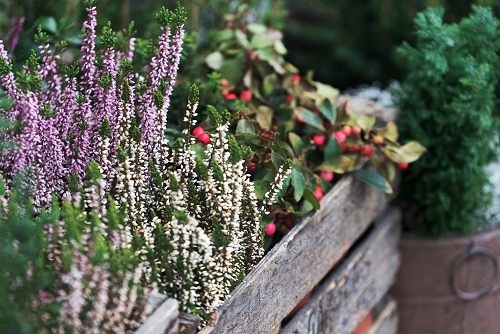
Winter temperatures can cause stress to plants. During winter, there are less angled rays and diminished sun exposure. Rainfall is also limited, meaning that regular irrigation may be needed. The soil type, wind exposure, and the slope must be considered before selecting winter gardening plants. Winter is open to elements such as extreme cold and dryness.
The temperatures may also get to the freezing level. Tender plants need to be located to sheltered locations to keep them from the winds and dryness. Be careful to watch out on slopes. These are of particular concern given that they face moisture runs and winds, which could then create dry conditions. The arrival of winter does not mean that your xeriscape garden cannot thrive.
Go Native
Native plants are adapted to the local weather conditions and soil. They do not require much water and can survive in harsh conditions. These plants support bees, birds, and other wildlife by offering shelter and food. Native flora also protects your yard from wildfires.
Hydrozone
Select water-wise plants during winter, and group them wisely. The same way you would cater to beds based on the plants’ particular needs for sunlight should be the same logic used for water usage.
Plants that need lots of water need to be grouped together. The same applies to native perennials. When selecting your plants, look for those that can keep moisture trapped inside for longer. These are plants with thick leaves and fine hairs.
Maintain Proper Drainage
Xeric plants thrive most in rocky environments, meaning they don’t tolerate too much rain. These plants should be planted in soils with organic matter and little clay. They should also be planted on raised mounds for better water drainage. Instead of raking leaves, use them to mulch the ground. This is an organic layer that encourages nutrients to penetrate the ground leading to a lusher yard.
Xeriscaping is an excellent winter gardening that eliminates the need for supplemental water. It varies from natural landscaping due to the emphasis on the selection of plants that conserve water. For all your xeriscape landscape maintenance needs, call us today or contact us online.
Shrubbery Like Boxwood, Lavender, and Camellia
Adding shrubbery to your home’s outdoor landscape is a wonderful way to frame your garden and border a winding path. One particularly popular way for doing both, or either, is with evergreen shrubs.
Benefits of Evergreen Shrubs
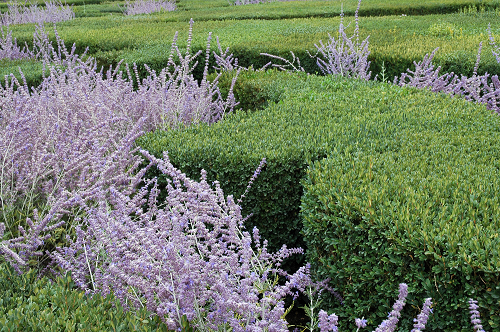
Evergreen shrubs are shrubs that can be a permanent fixture in your garden thanks to the fact that they will last all year.
In fact, evergreen shrubs like fatsia, lavender, and camellia can create beautiful flower displays and perfume-like scents throughout the year, even when everything else in your garden appears to have fallen dormant.
Evergreen shrubs will often be naturally variegated and create a colorful cascade of colors over your garden. Some shrubs are like trees and come with needled or broadleaf foliage.
Adding shrubs to your property will beautify the landscape all four seasons and provide a smooth transition between taller trees and the groundcover plants lining your walkway or garden.
Shrubs can be used for a number of different purposes beyond lining walkways and framing your garden as well.
Shrubbery can provide groundcover on slopes, buffer ambient noise from entering your home, and provide a breathtaking backdrop for your garden.
Boxwood Shrubs
One of the easiest-to-work-with types of evergreen shrub is boxwood shrubbery. Boxwood is hardy to zone 6, which essentially means that it will maintain its integrity no matter what nature throws at it.
Boxwood also fits most people’s initial idea of a shrub – boxwood has tiny, glossy foliage that can be hedged by Xeriscape’s landscaping experts into just about any desired shape.
Most homeowners like their boxwood shrubbery to be a few feet in diameter but, left to its own devices, boxwood can grow up to two dozen feet tall! This is a hardy shrub that will grow well in moderate sun and ligher shade.
Lavender
Lavender is a drought-tolerant plant that is a kissing cousin to mint, and each has a similar fragrance. Lavender, though, is a perennial shrub that has a lot of different size and color options to match your landscape.
There are actually four main types of lavender that homeowners in North America typically consider for their gardens: English lavender, Spanish lavender, Portuguese lavender, and lavandin.
English lavender owes its name to the English lavender trade of the 1700s and the fact that it smells so wonderful. English lavender can furnish homeowners with those variegated colors alluded to above: purples, violet, mauve, and mixtures of all three are afforded by English lavender.
Spanish lavender will come with pink and purple petals and have a unique pine scent. Portuguese lavender (a.k.a., Broadleafed lavender), on the other hand, will have paler purple leaves that are slightly larger.
Portuguese lavender can cross-pollinate with Engligh lavender, and both types are used in aromatherapy. The camphor in Portuguese lavender is good for attracting friendly insects into your garden and lending a sense of exotic variety and soothing color.
Lastly, lavandin might be a fancy name in this context since lavandin only means a cross between English lavender and Portuguese lavender. Lavandin produces sterile seeds but can grow in hot, arid climates and live through periods of sustained drought.
Camellia
Camellia is also a type of evergreen shrubbery, but the flowers of a blooming camellia are truly unique in certain species. There are more than 300 species of camellia, and approximately 3,000 hybrid species. Some camellia flowers are double.
Where does camellia work? Woodland gardens with dappled sunlight or gardens with slightly acidic soil are especially promising foundations for camellia.
Ask Xeriscape about the possibility of installing camellia shrubbery around your garden because the flowers come in a variety of beautifying colors: pinks, reds, yellows, and whites are common. Contact us for more information.
Landscaping Ideas Just in Time for Spring
Spring is the ideal time to take stock of your yard’s overall health and consider a few landscaping ideas. It is also a good time to remove broken branches and have shrubbery pruned back by a professional landscaping company.
First: Test Your Soil

Testing your soil and having your lawn fertilized could also be a helpful practice to get into at this point in the season.
When you have your soil tested, you’ll receive a rundown of your soil’s pH level as well as whether your soil has the right mix of nutrients to allow bushes and flowers to thrive.
The great thing about getting your soil tested early is that it gives you time to respond.
If your soil is missing a particular mix of nutrients, for instance, you’ll be able to have a professional landscaping company like Xeriscape fertilize your lawn to get the perfect blend of nutrients.
Mix Enclosure and Openness
The root word for garden is actually enclosure. With a great outdoor landscape, you’re actually looking to blend an enclosed space with the openness of the great outdoors.
There’s even something called the law of significant exposure to guide your landscaping ideas.
The idea behind this is to create a sense of refuge while allowing you and all of your guests to bask in the outdoors.
The law of significant exposure says that the vertical top of a space should be at least a third of the horizontal length of a space.
How does this all work in practice? If you have a patio that’s 21 feet wide horizontally, then a nearby hedge or overhanging tree should be at least 7 feet tall (3:1 ratio) so that there’s a comfy sense of enclosure. The same thing applies to gardens.
Create Multiple Seating Areas
Installing different seats and tables for different purposes and different times of the day is one of the best landscaping ideas out there.
A hammock deep in the yard, if you have the space, would be great for relaxing. A pair of set-off seats might be nice for enjoying a coffee in the morning or a cocktail later in the evening.
On the other hand, a table and perhaps a few couches would be ideal for entertaining guests or bringing a few plates outside and enjoying dinner al fresco!
Start with the Big Stuff
You might have to fight off the temptation to immediately plant your perennials in the sense that there are practical and design benefits to planting the big stuff before the small stuff.
Landscapers recommend going from planting trees and shrubs to dealing with perennials and ground cover.
You should start with something bigger like a tree because doing so gives you an anchor and an idea of where you’re going structurally.
It also prevents you from trampling newer planted flowers if you have to use a tractor or other heavy machinery to get your trees and shrubs into position.
And remember to follow the law of significant enclosure (mentioned above) and ensure, for instance, a small tree abutting a garden is at least a third the height of the garden’s width.
Variation Within Consistency
Repeating similar tones and textures in your garden often achieves a more powerful effect than experimenting with a bunch of individually interesting but collectively jarring colors.
A few different varieties of ferns lining your walkway and leading into the backyard achieves a consistent yet beautifying effect as opposed to dozens of mismatched plants and exotic flowers.
Summing it up, landscaping ideas should revolve around a sense of enclosure, comfort, and intriguing consistency of textures and tones. Contact us for more information.
Tips for Choosing Landscaping Shrubs
Shrubbery plays a great role of defining the visual space of your front yard and also guiding visitors to your doorstep. Since they come in variety in terms of color, shape, and size, the task is to pick shrubs that match your needs. The variety also gives you the freedom to ensure that your yard is as appealing as it can be. Consider the following tips when picking the right plants for your landscape.
Size of the shrubs

When it comes to choosing size, you need to be thorough. The secret here is to choose the ones that complement other trees and flowers in the landscape. Proximity to other plants is also a factor to consider. Their placement in the garden should be such that it is easy to care for them as well as other flowers and trees.
Where to plant and why
In most cases, the function of the bush determines where you should plant. As you may know, shrubs have different types of shrubs have different functionalities and hence you need to consider this before making a choice. For instance, long bushes are most suitable planted near the home as they will help control the climate during summer and winter. On the other hand, if you have a sloppy area that is susceptible to soil erosion, you should go for low growing plants. These will spread fast and within a few years you will have the slope completely covered.
Their closeness to other plants
Some bushes tend to grow tall and can shade other landscape plants from getting enough sunlight based on where they are planted. If you want them to be close to other plants, then you should consider planting the larger ones should fall on the northeast side. If you feel that the shrubs will interfere with the sun exposure to other plants, then the smaller ones are most suitable.
Color choice
Shrubs come in different colors and there is a color for each season. Since adding color to your landscape is one of the major reasons for having a shrubbery, you need to be keen when choosing the right colors. There are a variety of green shades to choose from, which help add interest to your landscape. The flowers is also another factor to consider when it comes to choosing the right bushes. Some common colors available include white, red, and blue. You can plant each color in between. There are also some plants that produce colorful berries which is a plus since they can feed birds in your garden.
Growing conditions
It is always wise to think about suitable climatic conditions for a particular plant before planting it. If you are in the south or southeast where the climate is a bit hot, you need to go for drought resistant shrubs. If you are in the north or northeast, consider cold resistant bushes. Another factor to consider in this category is the salinity. If you live near the beach where salt level are a bit high, choose plants that can withstand the condition.
When choosing shrubs for your landscape, always make sure you choose the ones that complements you yard in terms of color and size. The period the plant will last in your yard should also influence your choice. Contact us for more information.
Landscaping Guide: How to Create a Beautiful and Functional Garden Design
There is no perfect garden design for all properties. Therefore, if you are interested in improving your landscape by establishing a garden, you must create a custom design that matches your needs. We at DK Landscaping know that an ideal design should complement the unique aspects of your property. Each piece of land has idiosyncrasies which can be used in landscaping. In addition, you must think about your goals for your new garden. Here are some simple guidelines to help you get started.
Choose Your Plants Wisely
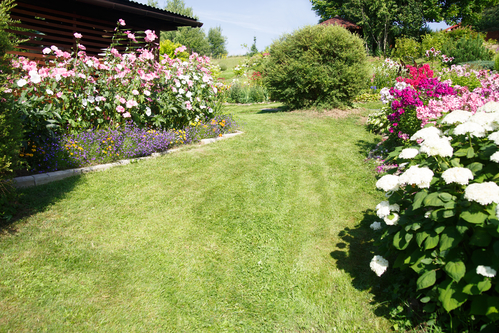
The best garden begins with the selection of the right plants to complement your landscape design and practical needs. In general, the first issue that you should consider when choosing your flora is the purpose of the garden. This space can be used to grow ornamental plants for aesthetic appeal. Alternatively, you can choose to grow edibles such as herbs and vegetables. If you are interested in both edibles and visual impact, it is possible to combine both types of plants.
The climate and environment is also an important consideration during the selection of plants for your garden. If you choose flowers, herbs or vegetables which cannot withstand growth in your local conditions, your garden will fail prematurely. It is advisable to choose indigenous plants because they grow naturally without the need for constant care. You can conduct research on the flora that grows in California for the best decisions.
Define the Boundaries
Boundaries are essential elements in garden design. If your garden does not have clear edges, your landscape will look like a wild land with plants growing haphazardly. Therefore, you must create distinct borders to define the perimeter of your garden and create order. If you would like to have a completely green landscape, consider using a hedge around your garden. For a more formal look, build a fence to isolate the space. It is also possible to edge the garden with stones. The stones will create a boundary without interfering with the visual effect of the garden.
Paths for Your Garden Design
Pathways are essential for a garden, especially one that experiences considerable foot traffic. The paths will allow smooth navigation around the space while protecting the landscape from the dangers of human carelessness. When designing your garden, you should think about the ideal places to form paths. You must also ensure that the path is wide enough for convenient use. To prevent the growth of plants on your pathways, consider installing a pavement or at least pouring gravel.
Borrow the Scenery
Gardens can be made more interesting by borrowing the scene from the surroundings. This borrowed scenery technique involves incorporating the view of a special feature into your garden. Simply speaking, this practice is about capturing the view beyond your own garden. For instance, you can trim the trees in your garden to reveal a distant building, your neighbor’s orchard or a mountain. Though these elements will not be on your property, they will have an impact on the aesthetics.
Enjoy Your Garden
Finally, you should create a comfort zone in your garden to allow you and your guests to enjoy the natural appeal of the space. For instance, a garden bench in a secluded spot might be perfect for settling and reading. A patio bordering the garden might be what you need for entertaining guests.
If you are interested in learning more about garden design, consult our landscaping experts for customized advice and guidance.
![]()
Lawn Treatment Tips
Proper maintenance of your lawn is crucial for a perfect residential landscape. If the right upkeep practices are not upheld, the lawn will deteriorate. Invasive weeds will grow on the land, the plants will lose their lushness and the grass might begin to wither. On the other hand, if you make time for lawn care, you will preserve the natural appeal of your yard. Here are simple lawn treatment tips to help you keep your residential landscape beautiful and healthy.
Aerate the Lawn Soil

Compacted soil does not support the efficient growth of grass. If the ground is too compact, the roots of the grass will not grow deep. Moreover, water, air and nutrients will not be mobile and readily available in the soil. Fortunately, you can relieve compaction and aerate the lawn soil by creating holes in the ground at intervals. There are specialized tools for aeration, but a simple garden fork will also be effective. You will only need to push the prongs into the ground at short intervals.
Apply Suitable Fertilizer
Feeding the lawn with fertilizer can improve the appearance and health of the grass. The treatment will provide the nutrients which might be absent from the soil. If your landscape is large, it is advisable to acquire specialized equipment for nutrients feeding. However, if the lawn is relatively small, you can manually apply the fertilizer to the grass. Ideally, the material should be used during the rainy season. Fertilizer will burn the grass if it stays on the blades. If it does not rain, you should irrigate the yard thoroughly to allow the nutrients to sink to the soil.
Plan on Over-seeding
Over-seeding is a beneficial practice for old and tired lawns. It is advisable to consider this process if your lawn is showing signs of thinning out, or there are bare patches on the land. In general, over-seeding involves covering the entire loan with a mixture of grass seeds and fertilizer. When these seeds grow, they will fill in the gaps between the thinning areas of the lawn, creating a lush and uniform landscape. If you decide to carry out this process, remember to keep the lawn moist to facilitate germination.
Mow the Lawn Correctly
Mowing is an important part of keeping your lawn in good condition. However, if you do not perform this maintenance process correctly, you could cause more harm to your landscape. Where possible, it is prudent to have your grass mowed by a skilled professional. If you must handle the work, you must remember to only cut about a third of the total grass length. Cutting more will compromise the growth of the grass. You must also avoid mowing wet grass because moisture causes clumping. Mowing the lawn in this condition increases the risk of patching.
Going Beyond Lawn Treatment Tips
Maintaining a beautiful landscape is not only as simple as upholding simple lawn treatment tips. The best upkeep and care practices require effort, time, skill and experience. Therefore, if you are interested in improving your residential lawn for long-term health and aesthetics, consider consulting our experts at DK Landscaping Inc. Whether you need mowing and edging or fertilization and weed management, you will receive the best services for a beautiful home.
![]()





